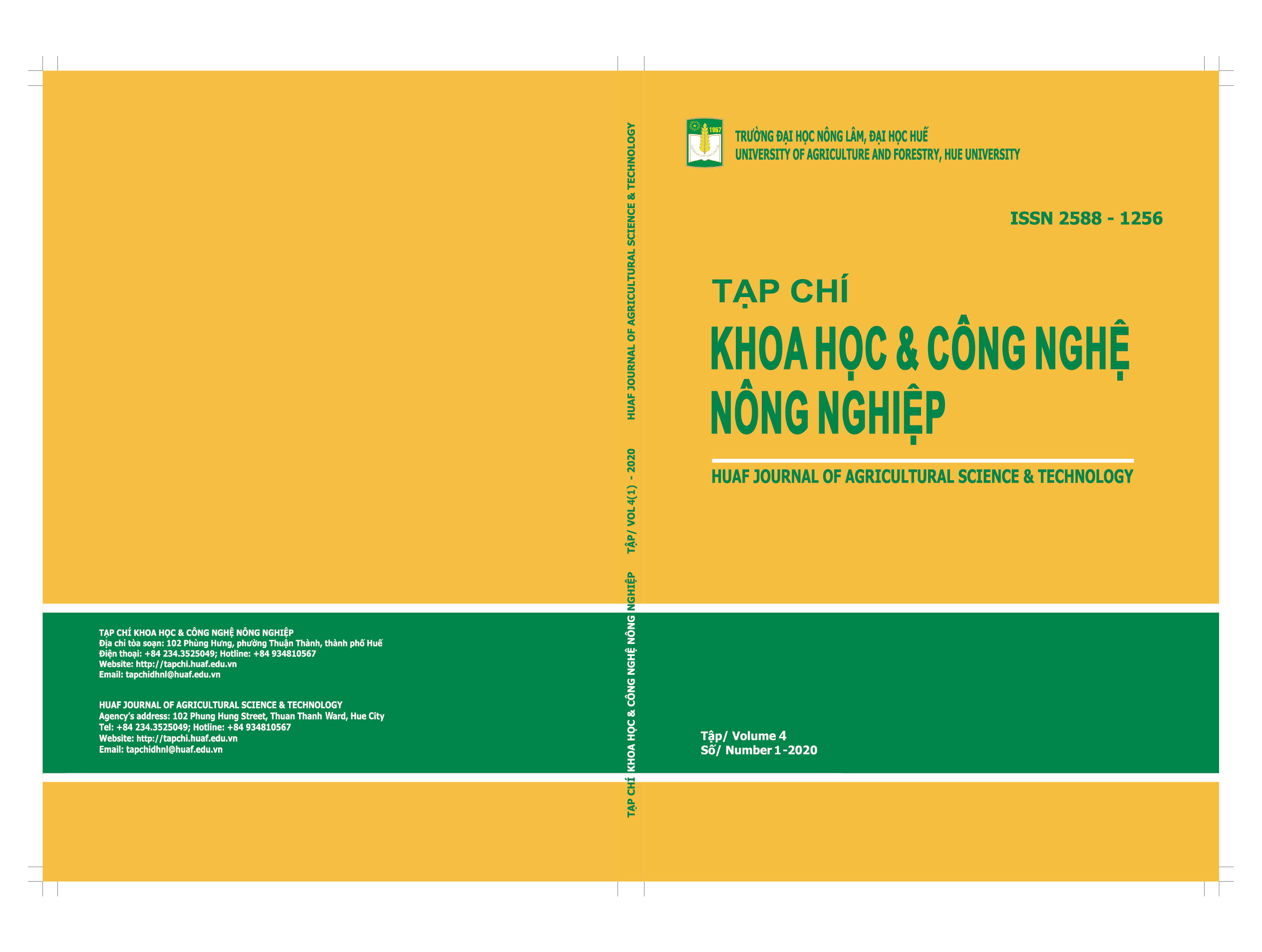##plugins.themes.huaf_theme.article.main##
Tóm tắt
Nghiên cứu này nhằm tìm hiểu đặc tính sinh hoá của các chủng xạ khuẩn phân lập được từ các ao nuôi tôm tại Thừa Thiên Huế, từ đó tìm ra chủng xạ khuẩn có khả năng kháng vi khuẩn Vibrio parahaemolyticus gây bệnh cho tôm nuôi. Xạ khuẩn được phân lập theo phương pháp của Lakshmi (2008) và định danh bằng phương pháp giải trình tự gen 16S rRNA. Nghiên cứu khả năng sinh enzyme và xác định khả năng gây độc trên máu tôm của các chủng xạ khuẩn được thực hiện trên các môi trường thạch chuyên biệt. Kết quả đã phân lập được 5 chủng xạ khuẩn DH A1, DM A1, DM A2, PH A1 và QN A1 có khả năng ức chế sự phát triển của vi khuẩn V. parahaemolyticus. Cả 5 chủng không làm tan tế bào máu tôm trên môi trường Rose-Bengal. Các chủng xạ khuẩn phân lập được có trình tự nucleotide tương đồng từ 94-98% so với chủng Streptomyces sampsonii ATCC 25495. Năm chủng xạ khuẩn phân lập được đều có khả năng sản sinh ra cellulase, amylase, lipase (trừ chủng PH A1), riêng 2 chủng PHA1 và QN A1 còn có khả năng tiết ra enzyme gelatinase. Kết quả của nghiên cứu này cho thấy có thể ứng dụng những chủng này để sản xuất chế phẩm sinh học thay thế cho kháng sinh trong điều trị bệnh nhiễm khuẩn do Vibrio parahemolyticus gây ra.
Từ khóa: Streptomyces sampsonii, Vibrio parahaemolyticus, Xạ khuẩn
Abstract
The aims of this study were: (i) to isolate and identify actinomycetes strains that were recorvered from intensive shrimp ponds in Tam Giang lagoon in Thua Thien Hue province; (ii) to study on the enzymes and antimicrobial activity on the pathogenic bacteria Vibrio parahaemolyticus to cultured shrimp; and (iii) to study on the virulence of recovered actinomyces strains to shrimp in the in vitro condition. The isolates were isolated from the following method of Lakshmi et al. (2008) and identified by 16s rRNA gene sequencing. Five actinomycete isolates (DH A1, DM A1, DM A2, PH A1 and QN A1) were isolated from shrimp pond’s sediment and the 16S rRNA gene sequences of these five isolates showed the identities from 94 - 98% with those of Streptomyces sampsonii strain ATCC 25495 through the BLAST analysis. The isolates were then investigated how their abilities produced antibacterial compounds, enzymes as well as haemolytic activity. Five isolates showed antimicrobial activity against V. parahaemolyticus. These isolates were non-heamolytic on the Rose-Bengal medium with hemolymph of shrimp added. In addition, PH A1 and QN A1 were able to increase enzymatic activity by producing cellulase, amylase, and gelatinases while DH A1, DM A1, DM A2, and QN A1 produced cellulase, amylase, and lipase. Results from this study provided the first insight into characteristics of marine actinomycete isolates recovered from shrimp ponds sediments in Thua Thien Hue.
Keywords: Actinomyces, Vibrio parahaemolyticus, Streptomyces sampsonii


